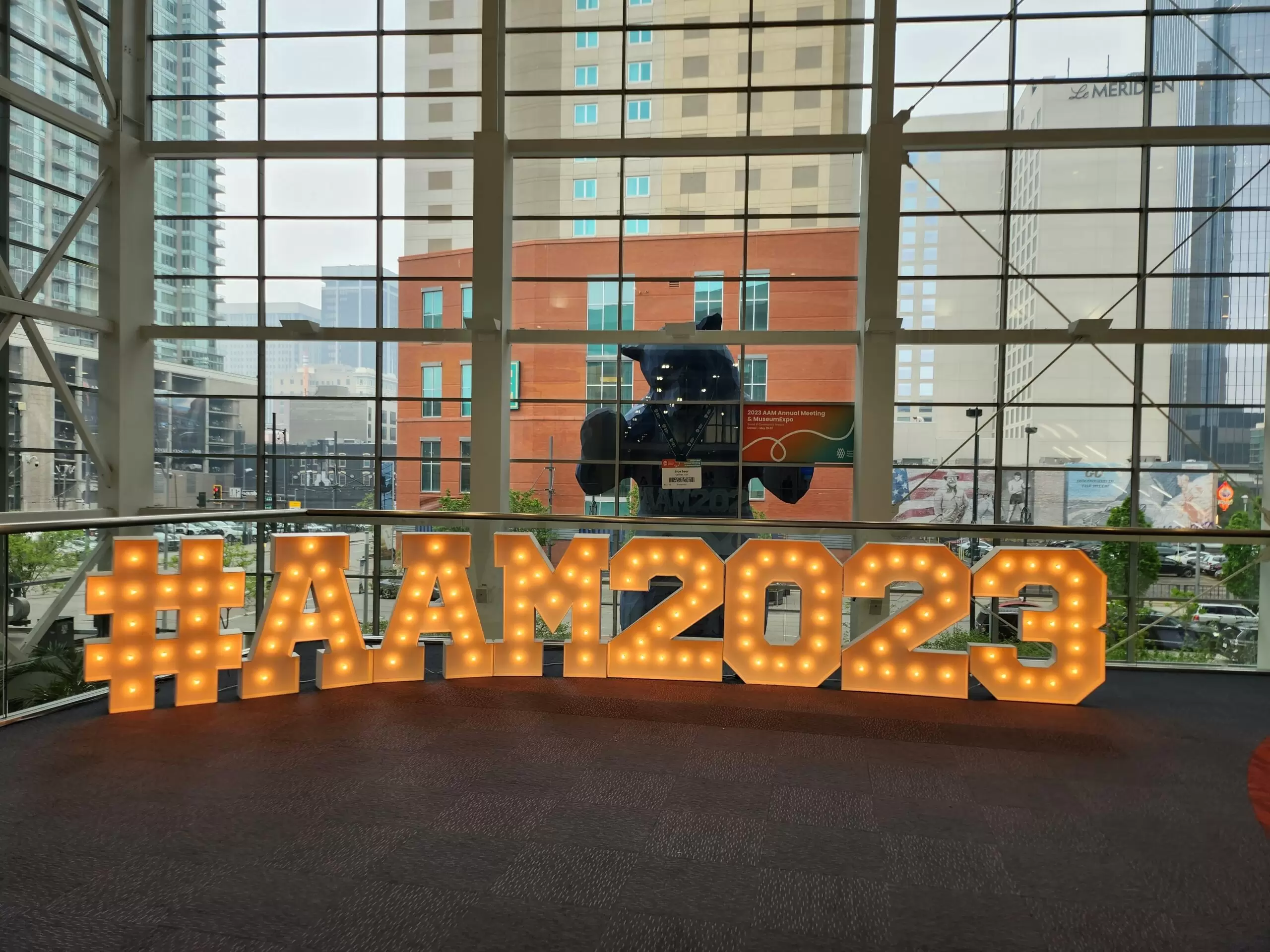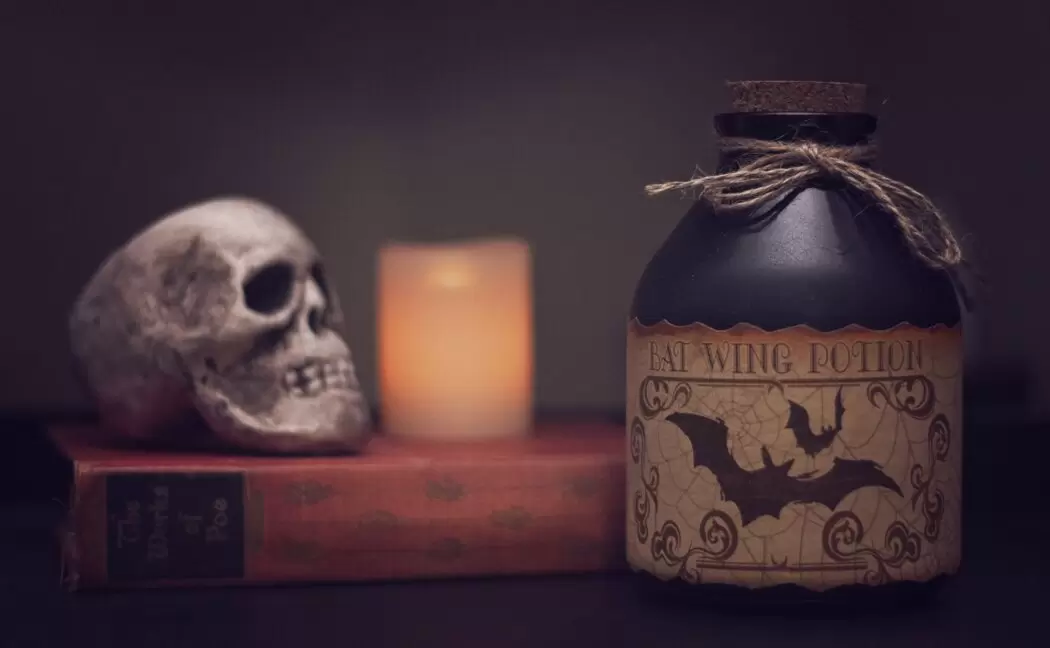More Than Just a Trend: Insights from the American Alliance of Museums 2023 Annual Meeting on the Transformative Power of Art Therapy
Discover the profound impact of art therapy as experienced at the American Alliance of Museums (AAM) Annual Meeting.


Art is empowering and limitless. Therapy benefits anyone and everyone.
That makes art + therapy a powerful combination, an undeniable asset, and a viable antidote to our ailments. I attended the American Alliance of Museums (AAM) Annual Meeting in Denver earlier this month and on the last day of May and Mental Health Awareness Month in the United States, I am hopeful about the good and sustainable work happening to help make art therapy programs more than a passing fancy in our field. Art therapy is a non-negotiable resource we have a responsibility to leverage. It must be integral to who we are and how we serve our audiences.
The theme of this year’s AAM Annual Meeting was “Social & Community Impact,” which included several sessions specifically on art therapy and mental health in museums. I had the opportunity to attend 4 of these sessions, which both singularly and collectively illuminated and illustrated how art can foster wellness. Healthy and thriving communities are made up of healthy and thriving individuals. Engaging individuals in art therapy inevitably leads to positive social and community change.
Based on what I learned in these sessions, and bolstered by my own experience as an arts administrator and creative practitioner (please note, I am not an art therapist), art + therapy leads to:
1. Holistic Healing

Сreated by Erica and Wonder AI
Art therapy integrates the mind, body, and spirit, providing a unique approach distinct from talk therapy alone. In the session “Making Sure Your Visitors Shine: Mental Health Education in Museums”, Marvin Logan, President and Executive Director of OH WOW! Center for Science and Technology attributes the success of its museum programs for young people to committing to and creating moments of elevation for the senses, moments of pride, moments of insight about self, and moments of connection with others.
2. Self-Reflection and Meaningful Insights

Сreated by Erica and Wonder AI
Art therapy promotes introspection, personal growth, and increased self-awareness through the creative process. For example, when Heidi Bardot, Director of George Washington University’s Graduate Art Therapy program led an experiential learning exercise with attendees at the session “Art Therapy in Museums: Unlocking Mental Wellness for Communities and Beyond” presented in partnership with .ART, she encouraged attendees to sit with their emotions for a moment after looking at a piece of art she shared, and then draw without worrying about creating masterpieces or overthinking what feelings were emerging. This practice also cultivates non-verbal expression which can be a window into one’s own soul.
3. Enhanced Social Engagement

Сreated by Erica and Wonder AI
Art therapy enhances social skills, empathy, and engagement with the greater good through collaborative projects and group discussions. Claudia Beeny, Executive Director of House of Shine, shared that their organization’s work is guided by the principle that there is mental health correlation between happiness and feeling as if one is contributing to the greater good of the community around them. This idea has been discussed by various philosophers, psychologists, and researchers, as early as Aristotle’s concept of “eudaimonia” (flourishing or living a good life), to pioneering psychoanalyst and feminist psychologist Karen Horney who emphasized the importance of fulfilling one’s potential in the context of social contribution and actively participating in the well-being of others, all the way to modern-day writer and researcher Emily Esfanhani Smith, author of “The Power of Meaning” which argues finding meaning and joy in life often involved contributing to something greater than oneself.
4. Conflict Resolution and Emotional Resilience

Сreated by Erica and Wonder AI
Art therapy has the potential to reduce and resolve conflicts and distress by providing a non-threatening space for self-expression and dialogue, cultivating emotional resilience and distress reduction. Participants in art therapy can explore and process their feelings, increasing their understanding of and empathy for others. GW’s Art Therapy Program designed and incorporated a community event into the offerings of the Osijek Museum of Fine Arts in Croatia that invited veterans from the civil war with Serbia to use creative practice as part of the way they unpack and manage their Post Traumatic Stress Disorder.
5. Increased Confidence and Trust of Self

Сreated by Erica and Wonder AI
Art therapy builds confidence and allows individuals to trust more completely their self-worth and value to their community. House of Shine’s model for art therapy programs stems from the word SHINE, which stands for Strengths, Hobbies, Interests & Irritants, Needs, and Experiences, in other words, all things unique to each individual and leveraged as a way to grow self-love through self-expression. Additionally, in the session with Heidi Bardot from GW’s Art Therapy Program, when attendees were invited to hold up their drawings to share with others, initially there was a lot of hesitation. People looked around to see if others were comfortable revealing their creations and as hands holding notebooks were slowly held up, others would start to do the same. This happened with 4 works of art in the session and I could see how over time and with some practice and encouragement, it could and would build confidence in those engaged in the art therapy.
6. A Societal Need Being Met

Сreated by Erica and Wonder AI
Art therapy by cultural organizations is meeting a critical need with both young people and established artists that can too easily be overlooked by schools, caregivers, and other social service institutions. Fort Collins Museum of Discovery’s Music Industry Nights was the focus of the session “Let’s Talk About It: Starting the Mental Health Conversation at Your Museum.” Introduced during the COVID-19 pandemic, in addition to providing an opportunity for musicians and audiences to come together safely for performances and jam sessions, the series also included a mental health station for check-ins and free food as part of the event to try and help address issues of food insecurity that were agitated by pandemic conditions.
7. Skillbuilding

Сreated by Erica and Wonder AI
Art therapy provides an opportunity for those working in the creative sector to develop and practice new skills, making them both more effective employees and even better human beings. Smithsonian American Art Museum revealed in the session “Collaborating with our Youth: Art Museums, Art Therapists, and Teachers” – Smithsonian American Art Museum” their adoption of abundant thinking which focuses on possibility and positivity. In learning this new approach to collaborating with youth on mindfulness, staff had to lean into their own vulnerability and the value of learning from their mistakes. Part of GW’s Art Therapy program is to train museum docents how to lead therapeutic tours of certain exhibitions as a new way of helping visitors interact with the art.
The sessions at the AAM Annual Meeting validated and deepened my understanding of the power of art therapy to change individuals and communities. By intentionally incorporating art therapy into their programming and design, museums can provide transformative experiences that foster mental wellness, promote social connections, and effect positive change for one and all. Next year, AAM has already announced that the focus of its 2024 Annual Meeting in Baltimore will hone in on mental health, wellness, and museums. Let’s keep it going.

Heidi Bardot (Director, Art Therapy Program at GWU), Erica Bondarev Rapach (founder, individu.art & Ambassador, .ART), Tina Feng (Comms & Marketing at .ART) and Jeff Sass (CMO at .ART) attending the AAM Annual Meeting 2023
Collaborating for Our Youth: Art Museums, Art Therapists, and Teachers
Elizabeth Dale-Deines, Teacher Programs Coordinator, Smithsonian American Art Museum
Making Sure Your Visitors Shine: Mental Health Education in Museums
Claudia Beeny, Executive Director, House of Shine, Dallas, Texas
Paul Herbert, Senior Associate, CamrbidgeSeven Presenter
Marvin L. Logan, Jr. Executive Director, OH WOW! The Roger & Gloria Jones Children’s Center for Science & Technology, Youngstown, Ohio
Let’s Talk About It: Starting the Mental Health Conversation at Your Museum
Brent Carmack, Associate Director, Fort Collins Museum of Discovery
Greta Cornett, Co-Founder, Fort Collins Musicians Association
Nick Duarte, Senior Manager, Fort Collins Museum of Discovery
Rachel Olsen, Director, Alliance for Suicide Prevention and Imagine Zero Coalition
Laurie Stolen, Director, Larimer County Behavioral Health Services
Laura Vilaret-Tuma, Community Engagement Manager, Fort Collins Museum of Discovery
Art Therapy in Museums: Unlocking Mental Wellness for Communities & Beyond
Heidi Bardot, Director, Art Therapy Program, George Washington University
Jeff Sass, Chief Marketing Officer, .ART Domains
Here are some examples of available domains related to this article’s main topic:
therapies.art / mytherapy.art / group-therapy.art / mytherapeutic.art / virtual.art / innovative.art
Secure yours now at get.art!





